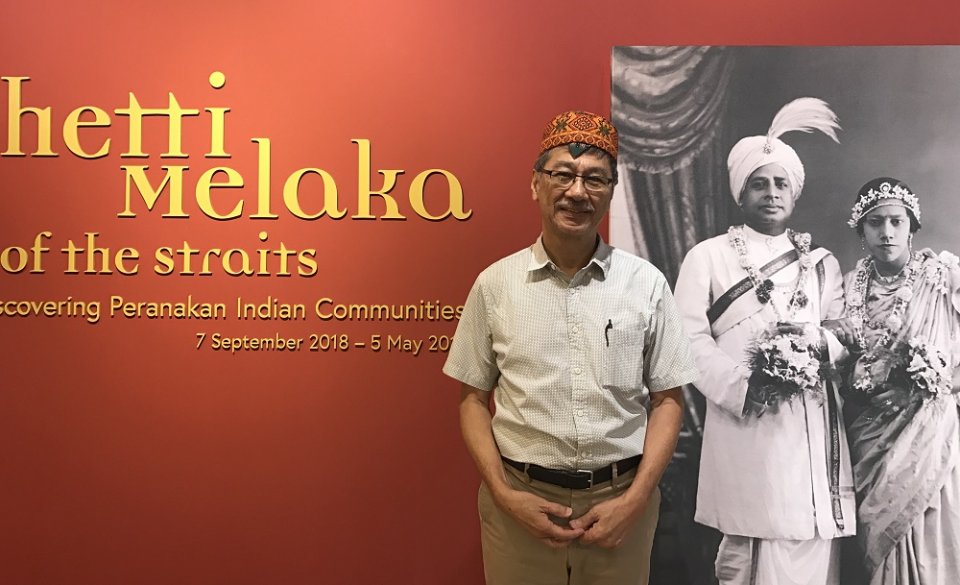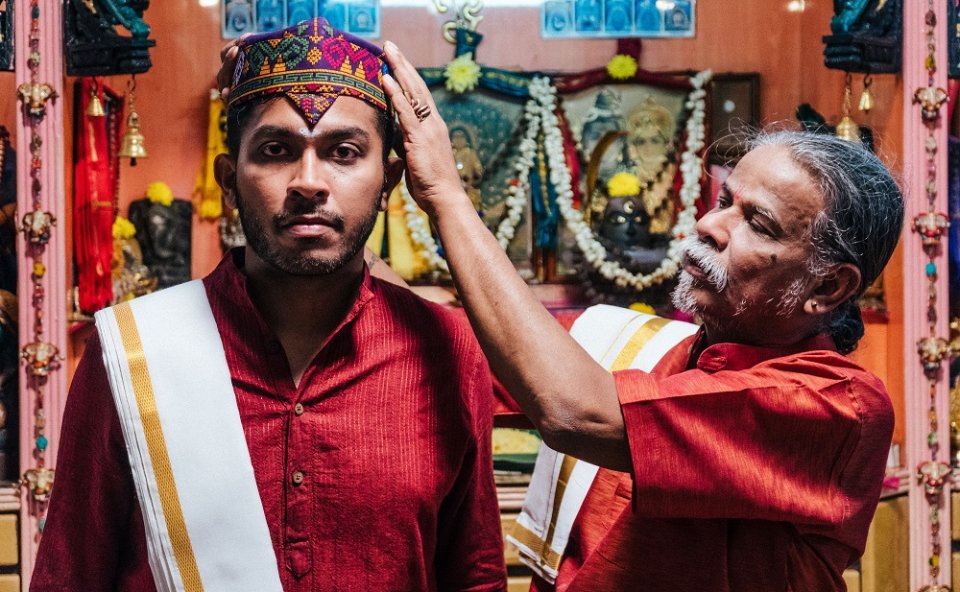Peek into the culture of one of Singapore's smallest minority communities before it's lost forever
Have you heard of the Peranakan Indians?
On the outside, David Bok looks every bit a Chinese man—perhaps a little tanner than most. But the olive-skinned bible teacher with a songkok perched on his head is actually Indian by heritage. Born to a mixed-Indian father and a Chinese mother, he comes from a centuries-old lineage of Chetti Melakan people—a community of early settlers in Melaka predating the Dutch and the British. Also known as Peranakan Indians, they were descendants of the early South Indian migrants who came in the 15th and 16th centuries, and married local Chinese or Malay women.
They are perhaps the most explicit representation of a melting pot of cultures. The Chetti Melaka pray to Hindu gods, speak Malay instead of Tamil, and have Chinese practices like the Qin Ming Festival’s sweeping of graves. They also have a secret language they converse in called Chitty Creole—a fluent mix of Chinese, Malay and Tamil undiscernible to outside ears.
Back in the ‘50s, the community was so tight-knit that they preferred to marry within their own community. As such, they often adopted outsiders to prevent miscegenation from “in-breeding”, Bok recalls. While his father was born into the community in Melaka, Bok’s mother was a Chinese orphan who was adopted.
“It’s supposed to be more protected,” he explained. “(We are) a diaspora; diaspora communities usually have problems with identity.”
Later, though they were both match-made to different people, they broke off their engagements and married each other.

David Bok
Today, that community is vastly dispersed and at the risk of complete dissolution. Bok, who turns 70 this year, was born in Kuantan, Pahang—away from the Chetti Melaka cultural center of Melaka. There was only one other family there who was partly Chetti Melaka, which made connecting with his identity extra hard. It was only when he went to university that he found others like him who were interested in their heritage.
When he came to Singapore in 1994, he met a researcher Gerald Pillay; together they put together an extensive family tree linking all the local Chetti Melaka. Now a practicing Christian married to a Chinese Singaporean, he is part of the Peranakan Indian (Chitty Melaka) Association Singapore, which turns 10 this year.
To celebrate the milestone, a new exhibition at the Indian Heritage Center in Little India seeks to lend a voice to the disappearing community. Co-curated by the local Chetti Melaka community and the National Heritage Board, Chetti Melaka of the Straits: Rediscovering Peranakan Indian Communities comprises personal artefacts on loan from members such as traditional dress, photographs, and even home recipes. To start off the tour, a commissioned documentary film by K Rajagopal follows the journey of some Chetti Melaka youth who embark on a re-discovery of their roots and heritage.
“The exhibition drew a lot of people out of the woodwork who didn’t want to be identified with the Chetti Melaka community,” said Bok, who attributed the increasing disinterest to a compounded diaspora and increased sense of lost identity in Singapore. “When you’re in Melaka you don’t have to think about identity because the environment—the temples, the festivals—affirm that identity for you.”
Also featured in the exhibition are a series of paintings that reimagine living Chetti Melaka members with their parents and ancestors in spaces that wouldn’t have been possible in the past. In one, president of the association Ponno Kalastree stands next to his grandfather, though the latter is pictured in his youth. Artist Nadiah Alsagoff said the contemporary family portraits were meant to bridge the gaps of not just time, but physical distance in the community’s global migration as well.

Who Are The Chetti Melaka, by K Rajagopal
And still, the rich history of the Chetti Melaka remains very much on the brink of disappearing. Bok shared that while he personally takes a keen interest in his heritage, his children don’t. With no strong ties to the already minority community in Singapore, they currently work in the US, and attend his events once a year as an obligation to him. It is a sad reality that Bok says is inevitable.
“When you move from the cultural and religious center of Melaka, you actually move away from your identity. Because it’s religion, culture, language, race that make up a person’s identity—and a lot of that is conditioned by the environment, Kampung Chetti. Culture is a moving target; you can’t force people to do something they don’t want to do,” he added.
In that same vein, the association’s executive committee comprises people above the age of 60, according to Bok. The future of Singapore’s Chetti Melaka once they retire remains unsaid.
“The next step is to hopefully find people from the younger generation—40s and 50s—who are interested enough in the community to help run it,” he said. “You can’t depend on us old fellas, you know.”
Chetti Melaka of the Straits: Rediscovering Peranakan Indian Communities runs from now till May 5, 2019 at the Indian Heritage Centre, 5 Campbell Lane. Admission is free. More information here.
Advertisement